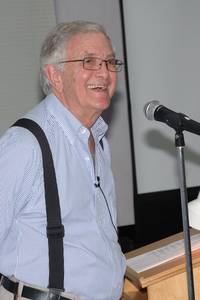
On Thursday, September 27, 2012, Rick Britton presented the fourth and final lecture in our series entitled “Virginia History 301: The Old Dominion in Antebellum Times.”
The date is June 27, 1850 when the very first train rolled into Charlottesville, says Britton, in this fascinating podcast. Rail passengers of time could travel from Richmond, VA to Charlottesville in just 12 hours, says Britton. Listen as he tells the story of the early railroads of central Virginia, and of Claudius Crozet, the brilliant engineer who created the world’s longest tunnel through the Blue Ridge mountains.
Britton, an award-winning historian and Charlottesville-based author, lecturer, and cartographer organized the series in conjunction with the Senior Center in Charlottesville.
This is the fourth and final part of this series. Click here listen all four parts.



